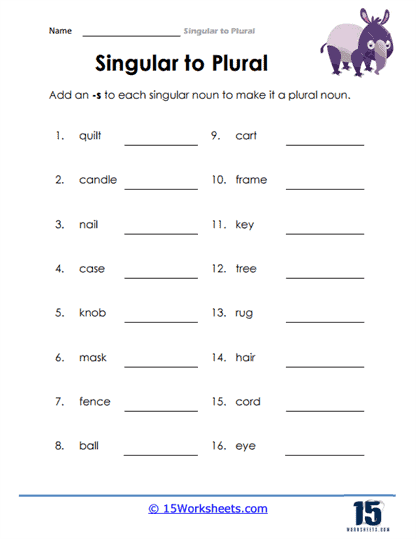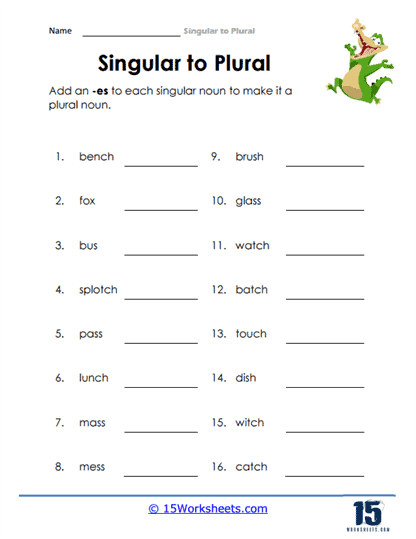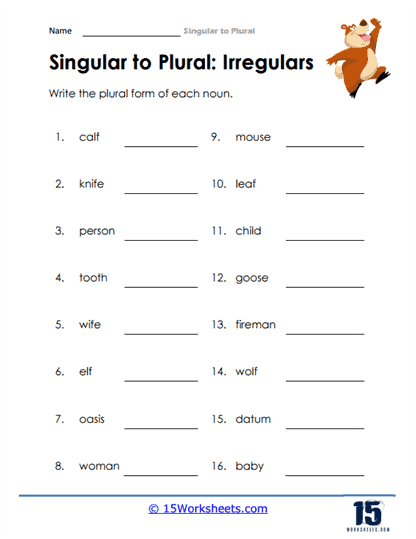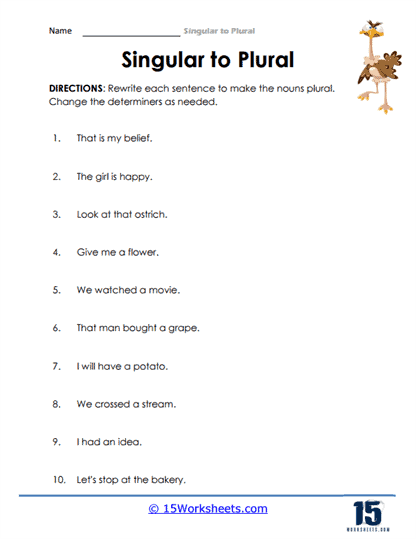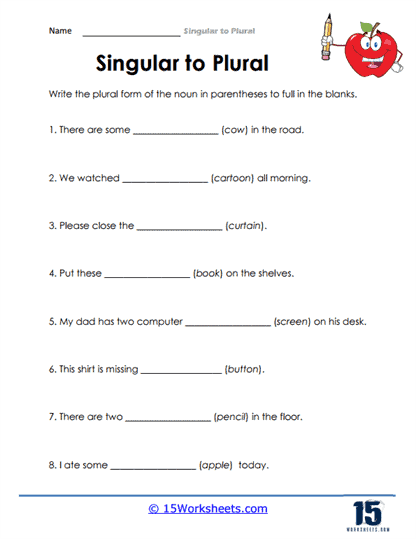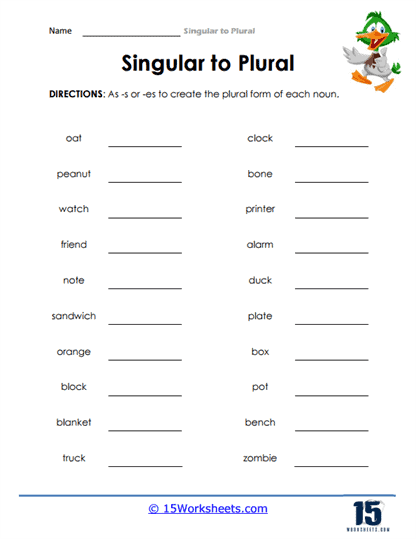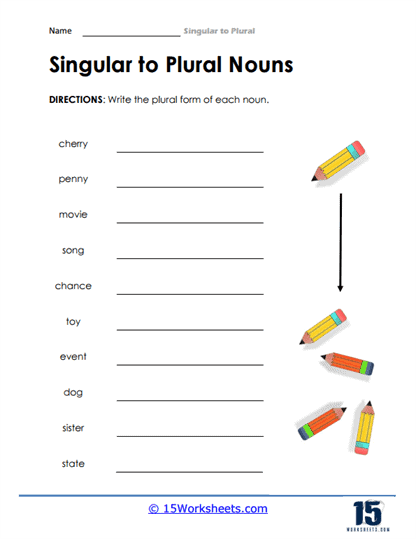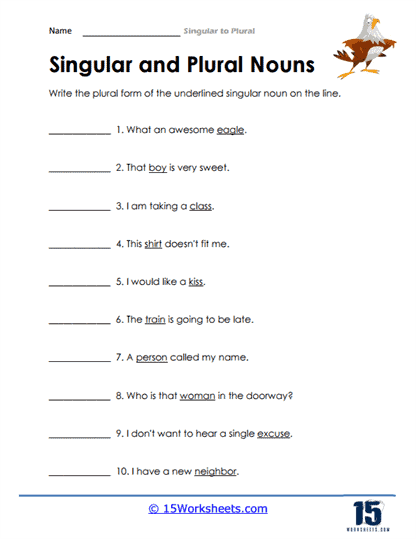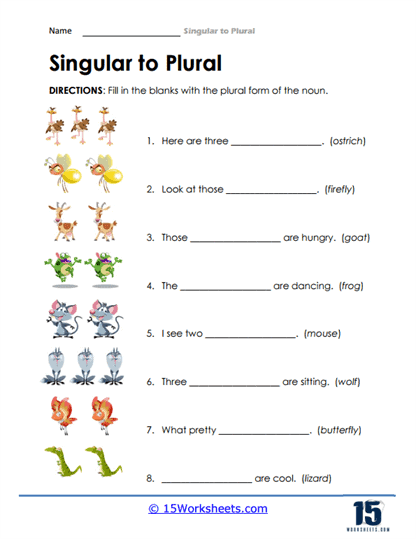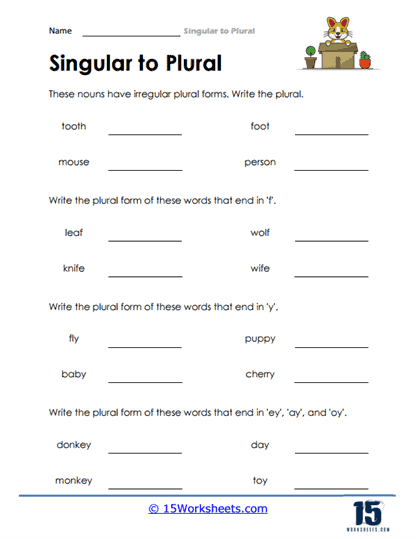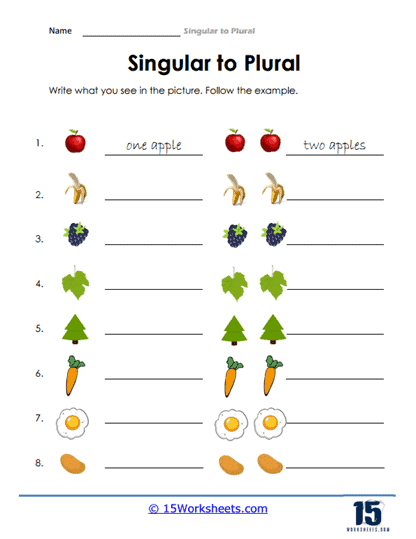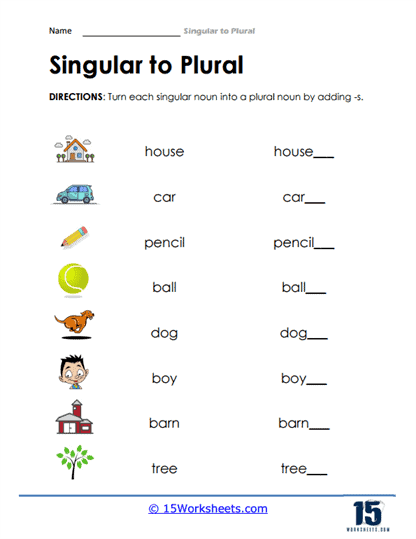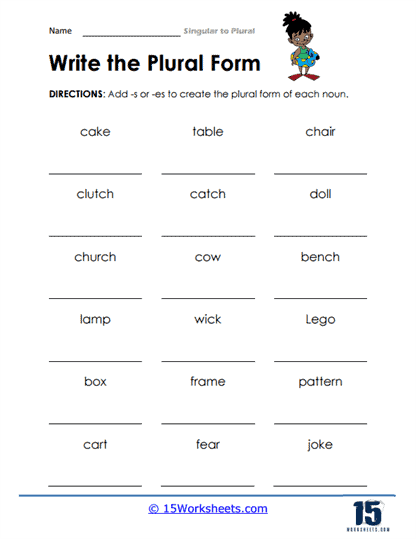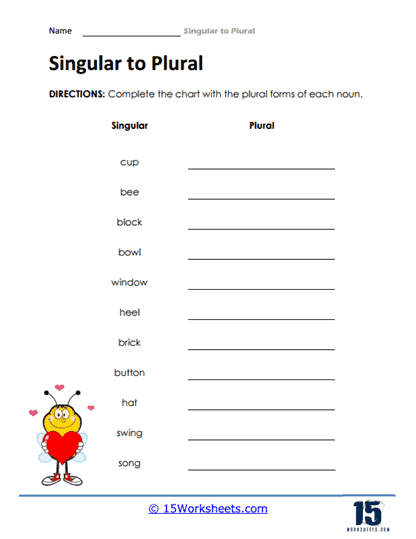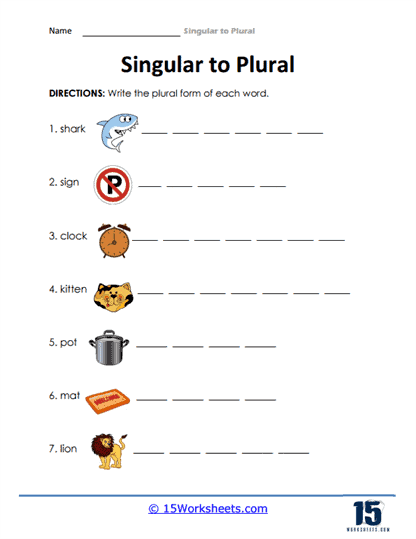Singular to Plural Worksheets
All About These 15 Worksheets
This collection of singular to plural worksheets are designed to help students learn and practice the rules of forming plurals in English grammar. These worksheets provide exercises that mostly require students to change singular nouns to their plural forms.
These worksheets include fill-in-the-blank exercises and rewriting activities. They cover a range of pluralization rules, including adding “-s” or “-es” to the end of a word, changing “-y” to “-ies,” and using irregular plural forms. By accomplishing these worksheets, students will:
- Transfrom singular nouns to their plural forms by following the various corresponding rules;
- Be familiar with all the different rules on how to transform singular nouns to their plural form;
- And understand the importance of acquiring mastery on being knowledgeable with both the correct singular and plural forms of nouns.
These singular to plural worksheets are an important tool for helping students improve their grammar skills and develop accuracy in their writing. Through these worksheets, students can gain a better understanding of the rules of forming plurals and practice applying them correctly in their writing. They are also useful for reinforcing grammar concepts taught in the classroom and helping students build confidence in their language abilities.
How To Convert Singular to Plural?
In English grammar, there are several rules for forming the plural of singular nouns. Here are some of the most common pluralization rules, along with examples.
- Add “-s” to the end of the word:
- Car → Cars
- Tree → Trees
- Book → Books
- Add “-es” to the end of the word if it ends in “-s,” “-x,” “-z,” “-sh,” or “-ch”:
- Bus → Buses
- Box → Boxes
- Quiz → Quizzes
- Dish → Dishes
- Watch → Watches
- Change “-y” to “-ies” if the word ends in a consonant before the “-y”:
- Baby → Babies
- City → Cities
- Fly → Flies
- Use an irregular plural form:
- Man → Men
- Woman → Women
- Child → Children
- Foot → Feet
- Use the same form for both singular and plural:
- Sheep
- Deer
- Fish
It’s important to note that there are some irregular plural forms in English that do not follow these rules. It’s best to learn these forms individually, as they can be quite different from the singular form. Here are some examples:
- Mouse → Mice
- Goose → Geese
- Tooth → Teeth
In summary, to form the plural of a singular noun in English, you generally add “-s” or “-es” to the end of the word, change “-y” to “-ies,” use an irregular plural form, or use the same form for both singular and plural.

